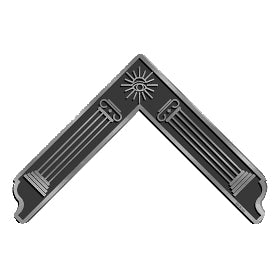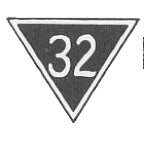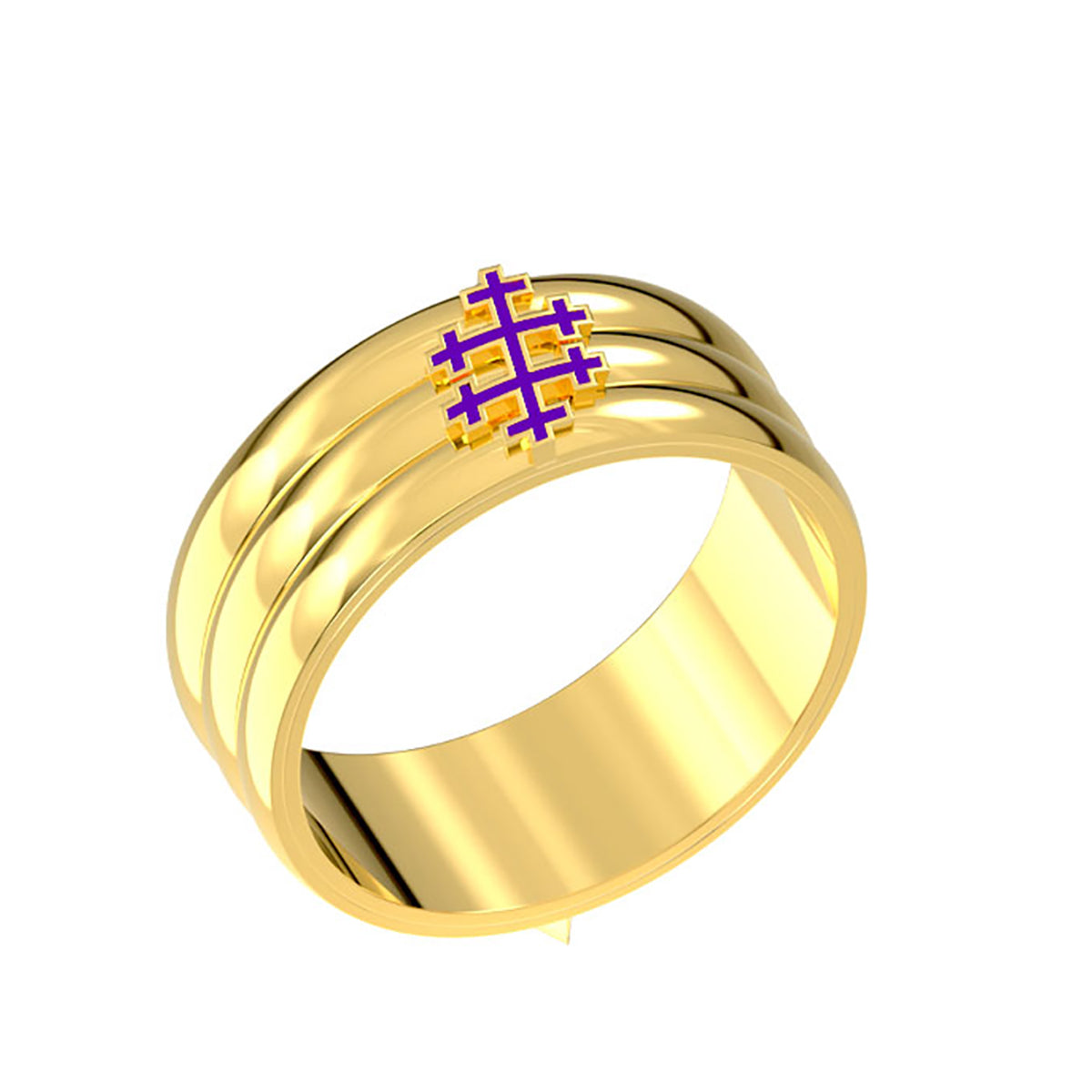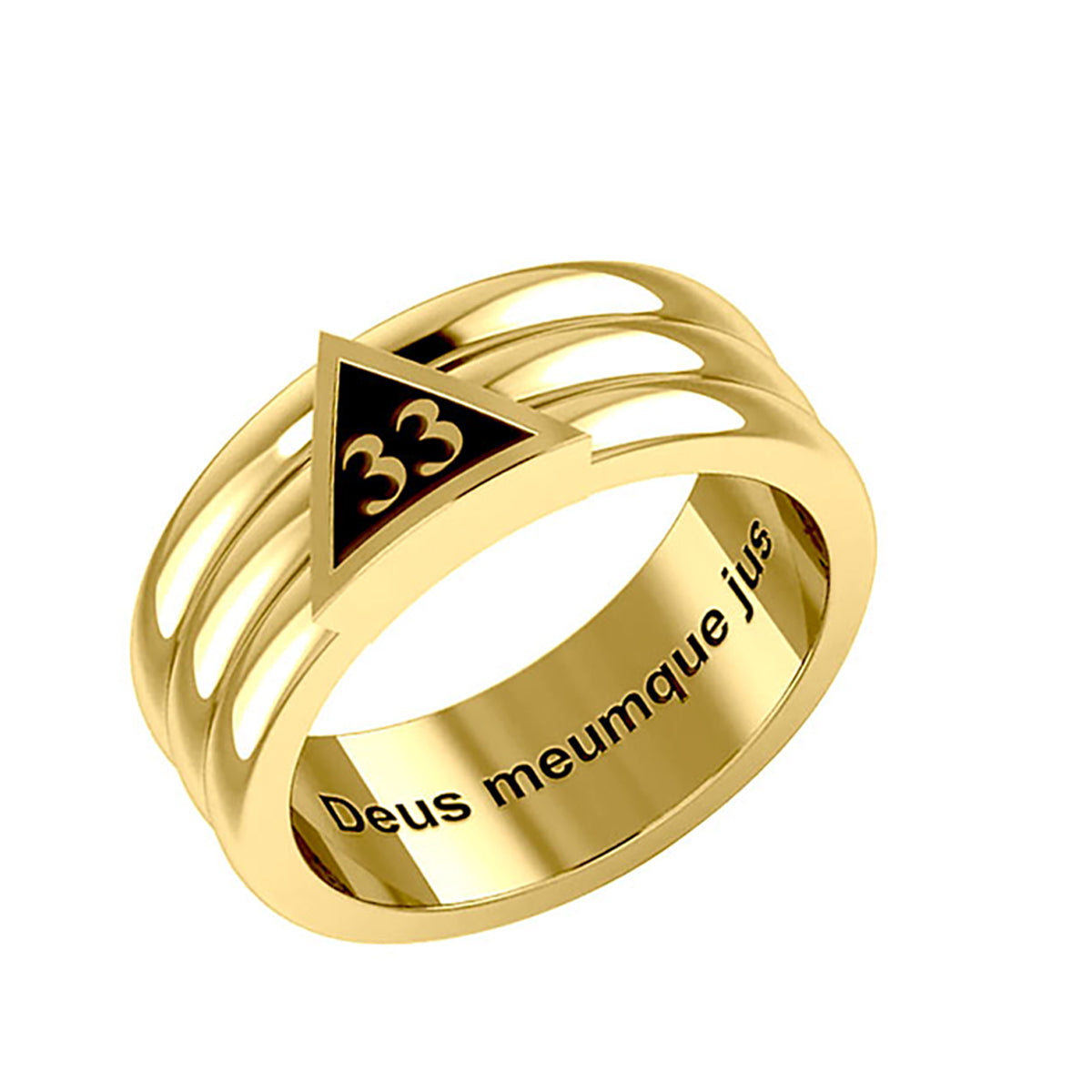Masonic Rings
1. The Origin and Meaning of Masonic Rings
Masonic rings have a long history dating back to the 18th century when Freemasonry first became popular in Europe and the Americas. In the early days, the Masonic ring was not as common as they are today. However, as the fraternity grew in popularity, the use of Masonic rings as a symbol of membership also grew. Masonic rings were worn by members of the fraternity as a symbol of their membership and as a symbol of the principles and values of the organization. The design of a Masonic ring often features symbols such as the square and compass, the letter "G" (which stands for God), and various other symbols that are significant to the fraternity. A Masonic ring is worn on the fourth finger of the right hand because it was believed that a vein in that finger led directly to the heart, a symbol of the strong bond between the wearer and the fraternity.
2. Types of Masonic Rings
There are several different types of Masonic rings, each with its own distinct design and symbols. Some of the most common types of Masonic rings include:
-
Master Mason: A type of Masonic ring worn by members who have reached the highest degree of Freemasonry, which is the Master Mason degree. This degree is the third and final degree in the Blue Lodge and is considered the most important degree as it imparts the most knowledge and understanding of the principles and teachings of Freemasonry.
Master Mason rings typically feature the square and compass, which are the most recognizable symbols of Freemasonry. The square represents the morality and virtues that the wearer should adhere to, and the compass represents the limit of the wearer's actions and the need to keep their passions within bounds. The letter "G" (which stands for God) is also commonly found in Master Mason ring designs, symbolizing the belief that all things come from God. Common side emblems are the trowel and plumb.
-
Scottish Rite Rings: A Masonic ring worn by members of the Scottish Rite, a branch of Freemasonry that has additional degrees beyond the basic three degrees of the Blue Lodge. They often feature the double-headed eagle, which is a symbol of the Scottish Rite, as well as other symbols such as the 32 degree and 14th degree yod, which represents the higher degrees of the Scottish Rite.
- Past Master Rings: A Masonic Ring worn by members who have served as the Master or head of a Lodge. They often feature symbols such as the Compass, Sun, and Quadrant, and in most jurisdictions a Square. The gavel and top hat are two common side emblems, which are symbols of the Past Master's role as a leader.
-
Shrine Rings: A Masonic ring worn by members of the Shriners, a group within Freemasonry that is known for its philanthropy and community service. The main symbol of the Shriner's ring consist of a scimitar, stands for the backbone of the fraternity, two claws or crescent, represents philanthropy and the sphinx, stands for the governing body of the Shriners. The five-pointed star represents the thousands of children helped by the philanthropy each year.
- Eastern Star Rings: A woman's Masonic ring worn by the Eastern Star fraternal organization that is associated with the Freemasons. The ring emblem of the Eastern Star is a five-pointed star with the letters F, A, T, A, L, which stands for "Faith, Hope, Charity, And Truth." The star is typically surrounded by a circle and may be decorated with other symbols such as a triangle, a rosette, or a sheaf of wheat.
Note that these are general descriptions and designs may vary depending on the region and the specific lodge.
3. Symbols of a Masonic Ring:
Masonic symbols are used by Freemasons to represent various aspects of their beliefs and tradition. These symbols have a long history, with some of the most recognizable ones being used since the Middle Ages. The symbols often show up in artwork, architecture, and literature. In this article, we will discuss some of the more common Masonic symbols and their meanings.
-
 The Square and Compass: The square and compass are the most recognizable symbols of Freemasonry and represent the fraternity's focus on morality and ethics. The square represents morality, while the compass represents the brotherhood of man and the G represents God. Most commonly found on Masonic ring are Master Mason.
The Square and Compass: The square and compass are the most recognizable symbols of Freemasonry and represent the fraternity's focus on morality and ethics. The square represents morality, while the compass represents the brotherhood of man and the G represents God. Most commonly found on Masonic ring are Master Mason. -
 The Level: This symbol represents the equality of all members of the fraternity and the importance of leveling all prejudices and biases. It also represents the importance of moral uprightness. Common on a Masonic ring
The Level: This symbol represents the equality of all members of the fraternity and the importance of leveling all prejudices and biases. It also represents the importance of moral uprightness. Common on a Masonic ring -
 The Plumb Line: This symbol represents the importance of moral uprightness and the need to always strive for perfection. Most commonly found on Master Mason Rings. Common on a Masonic ring
The Plumb Line: This symbol represents the importance of moral uprightness and the need to always strive for perfection. Most commonly found on Master Mason Rings. Common on a Masonic ring -
 The Trowel: This symbol represents the importance of spreading the teachings of the fraternity and building strong connections with others. Most commonly found on Master Mason Rings. Common on a Masonic ring
The Trowel: This symbol represents the importance of spreading the teachings of the fraternity and building strong connections with others. Most commonly found on Master Mason Rings. Common on a Masonic ring -
 The Compass, Sun, and Quadrant, and in most jurisdictions a Square. Past Master is the term used to indicate a Freemason that has been Master or Head of a Lodge in the past.
The Compass, Sun, and Quadrant, and in most jurisdictions a Square. Past Master is the term used to indicate a Freemason that has been Master or Head of a Lodge in the past. -
 The Gavel: This tool represents the importance of self-control and discipline, and is used to teach that members should strive to control their passions and desires in order to become better men. Most commonly found on Past Master Rings.
The Gavel: This tool represents the importance of self-control and discipline, and is used to teach that members should strive to control their passions and desires in order to become better men. Most commonly found on Past Master Rings. -
 The Top Hat: Considered a symbol of authority, wisdom and knowledge. It represents the idea that the wearer has achieved the highest level of understanding and enlightenment within the fraternity, and that they have a wealth of knowledge and experience to share with others.
The Top Hat: Considered a symbol of authority, wisdom and knowledge. It represents the idea that the wearer has achieved the highest level of understanding and enlightenment within the fraternity, and that they have a wealth of knowledge and experience to share with others. -
 The Double-Headed Eagle: This symbol is most often associated with the Scottish Rite of Freemasonry. The symbol represents the universality of the fraternity and its teachings, and it also represents the power and authority of the Scottish Rite.
The Double-Headed Eagle: This symbol is most often associated with the Scottish Rite of Freemasonry. The symbol represents the universality of the fraternity and its teachings, and it also represents the power and authority of the Scottish Rite. -
 The 32nd Degree: It is a degree within the Scottish Rite of Freemasonry. It is the highest degree that a member can attain within the Scottish Rite and awarded to members who have demonstrated exceptional dedication and service to the fraternity.
The 32nd Degree: It is a degree within the Scottish Rite of Freemasonry. It is the highest degree that a member can attain within the Scottish Rite and awarded to members who have demonstrated exceptional dedication and service to the fraternity. -
 The 14th Degree: It is a degree within the Scottish Rite, features the symbol of the Yod as one of its central emblems. The Yod is a Hebrew letter that represents the Divine name of God, and is the first letter of the Hebrew name of God, Yahweh. The 14th degree is all about the pursuit of spiritual knowledge.
The 14th Degree: It is a degree within the Scottish Rite, features the symbol of the Yod as one of its central emblems. The Yod is a Hebrew letter that represents the Divine name of God, and is the first letter of the Hebrew name of God, Yahweh. The 14th degree is all about the pursuit of spiritual knowledge. -
 The 33rd Degree: It is the highest degree in the Scottish Rite, an appendant body of the fraternity. It is an honorary degree, awarded to members who have demonstrated exceptional dedication and service to the fraternity. It's also known as the "Sovereign Grand Inspector General" and is only conferred upon a select few members, who have been nominated by their peers and voted on by a panel of their peers.
The 33rd Degree: It is the highest degree in the Scottish Rite, an appendant body of the fraternity. It is an honorary degree, awarded to members who have demonstrated exceptional dedication and service to the fraternity. It's also known as the "Sovereign Grand Inspector General" and is only conferred upon a select few members, who have been nominated by their peers and voted on by a panel of their peers. -
 The Mystic Shriner: The main symbol of the Shriners. It consist a scimitar, stands for the backbone of the fraternity, two claws or crescent, represents philanthropy and the sphinx, stands for the governing body of the Shriners. The five-pointed star represents the thousands of children helped by the philanthropy each year.
The Mystic Shriner: The main symbol of the Shriners. It consist a scimitar, stands for the backbone of the fraternity, two claws or crescent, represents philanthropy and the sphinx, stands for the governing body of the Shriners. The five-pointed star represents the thousands of children helped by the philanthropy each year. -
 The Fez Hat: It is a traditional head covering worn by members of the Shriners, an appendant body of Freemasonry. The fez is a symbol of the fraternity's Middle Eastern heritage, and it is also a symbol of the fraternity's commitment to philanthropy and the mission of the Shriners Hospitals for Children.
The Fez Hat: It is a traditional head covering worn by members of the Shriners, an appendant body of Freemasonry. The fez is a symbol of the fraternity's Middle Eastern heritage, and it is also a symbol of the fraternity's commitment to philanthropy and the mission of the Shriners Hospitals for Children. -
 The Camel: Common on Shriner rings is a symbol that harkens back to the group's founding. According to tradition, at the first meeting of 13 Freemasons who formed what would later become known as “the Covenant,” an Arab chief appeared surrounded by 13 camels wearing blankets with Masonic symbols on them.
The Camel: Common on Shriner rings is a symbol that harkens back to the group's founding. According to tradition, at the first meeting of 13 Freemasons who formed what would later become known as “the Covenant,” an Arab chief appeared surrounded by 13 camels wearing blankets with Masonic symbols on them. -
 The Crown & Cross: It is a symbol that has been used for centuries by Masons to represent faith, loyalty, and dedication to their organization. The Crown and Cross are known as one of the most meaningful symbols in Freemasonry, along with the square and compasses. It has been historically associated with authority, royalty, justice, law enforcement, and spiritualism. Found on Knight Templar rings.
The Crown & Cross: It is a symbol that has been used for centuries by Masons to represent faith, loyalty, and dedication to their organization. The Crown and Cross are known as one of the most meaningful symbols in Freemasonry, along with the square and compasses. It has been historically associated with authority, royalty, justice, law enforcement, and spiritualism. Found on Knight Templar rings. -
 The 16th Degree: It is a degree of the Scottish Rite of Freemasonry, also known as the "Prince of Jerusalem,". This degree is based on the historical events surrounding the building and dedication of King Solomon's Temple in Jerusalem. It teaches the lessons of fraternity, charity, and the importance of building a spiritual temple within oneself.
The 16th Degree: It is a degree of the Scottish Rite of Freemasonry, also known as the "Prince of Jerusalem,". This degree is based on the historical events surrounding the building and dedication of King Solomon's Temple in Jerusalem. It teaches the lessons of fraternity, charity, and the importance of building a spiritual temple within oneself.
Many of our rings are customizable, are a handmade item, and made of precious metal such as sterling silver, yellow or white gold. . Other options are Blue Lodge Rings or Freemason Ring. All rings are Brand-New, Unused, and Unworn item.
Masonic Rings Styles:
There are many different styles of Masonic rings available, each with its own unique look and design. Some of the most popular styles include:
-
Wedding bands: These are traditional Masonic rings that are worn by men who are married or engaged. Masonic wedding bands are typically just a band with branch emblems. Available in 10k, 14k yellow gold or white gold or 925 sterling silver.
-
Signet rings: These are Masonic rings that have a flat surface that are engraved with the branch emblems. Signet Rings were traditionally used as a seal for wax to sign documents, letters and nowadays they are worn as a fashion statement. Signet Rings are available in 10k, 14k yellow gold or white gold or 925 sterling silver.
-
Class rings: These Masonic rings are adorn with freemason motif but mimic the classic high school or college rings. They usually have " Master Mason" lettering and feature a center stone. Available in 10k, 14k yellow gold or white gold or 925 sterling silver
-
Statement rings: These are large, bold custom Masonic rings that are designed to make a statement. They are typically wide rings and can have various designs. Most statement rings will have a top and two side emblems. They also can come with beautiful gemstones. Available in 10k, 14k yellow gold or white gold or 925 sterling silver.


